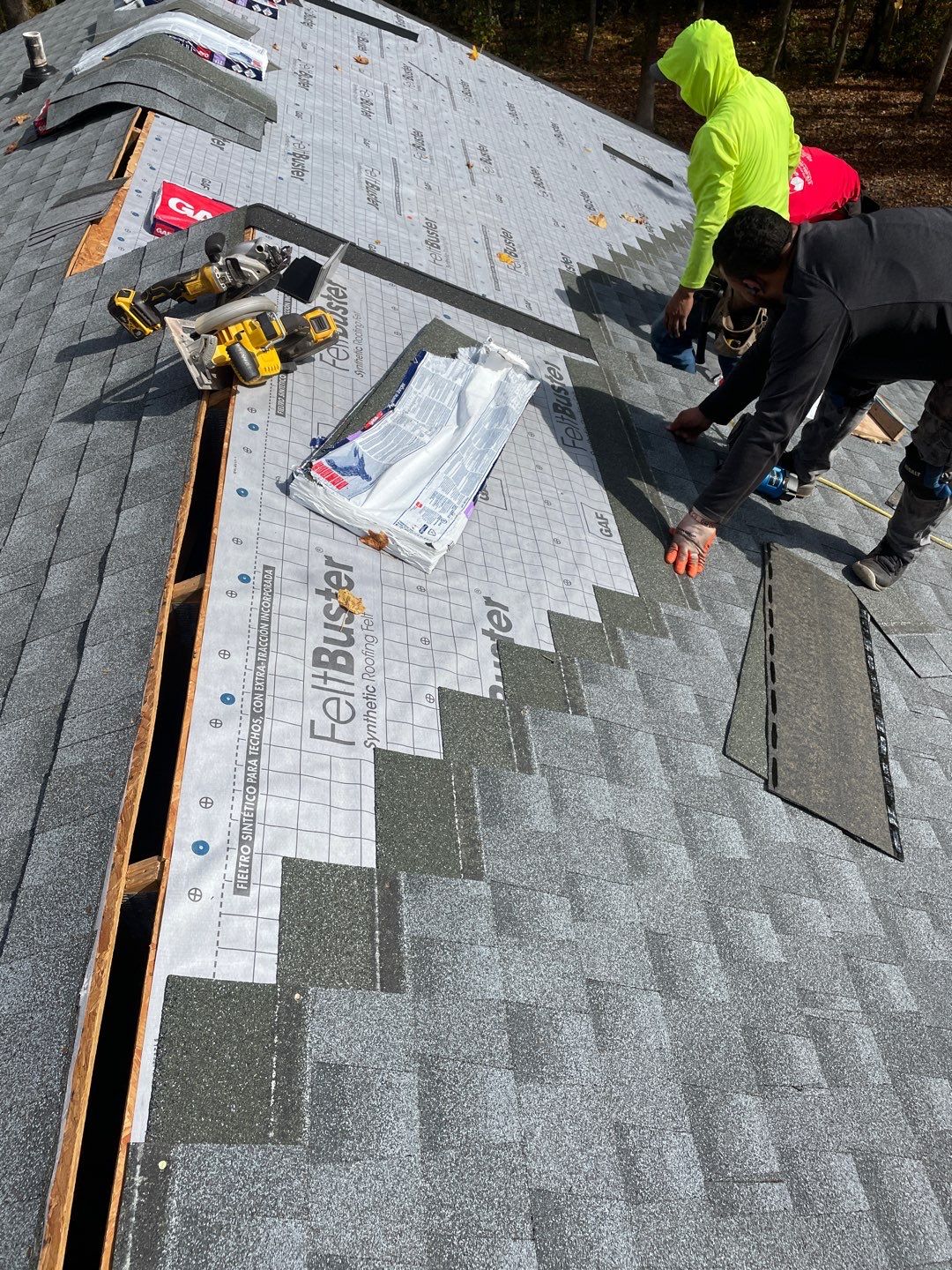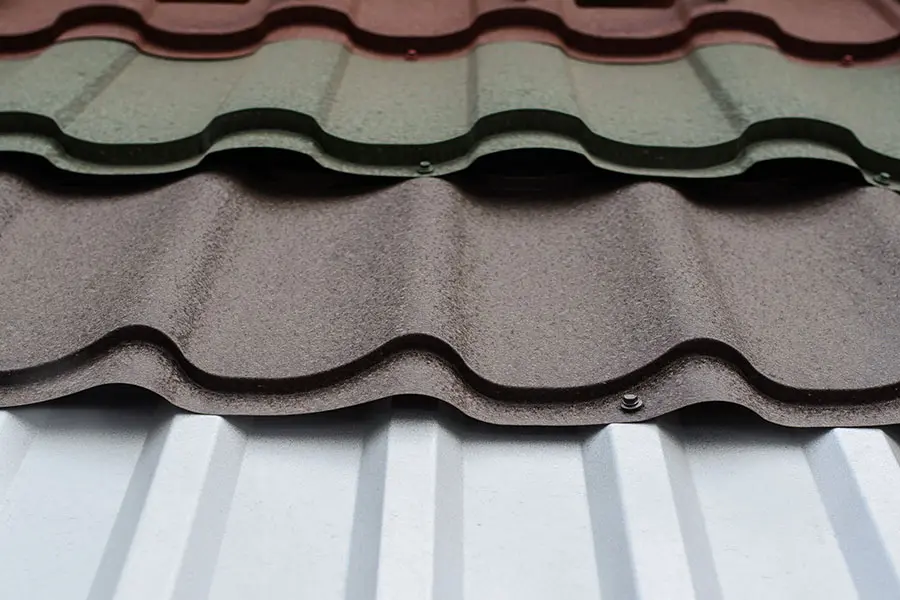Exactly How Gainesville Roofing Companies Can Transform Your Home's Exterior
Exactly How Gainesville Roofing Companies Can Transform Your Home's Exterior
Blog Article
Best Practices for Ensuring Proper Roof Covering Ventilation
A balanced intake and exhaust vent ratio, frequently 1:300, plays an essential duty, with consumption vents preferably placed at the reduced side of the roofing for amazing air access and exhaust vents at the height for warm air exit. Maintaining insulation away from vents is essential to protect against air flow constraint.
Understand Ventilation Essentials
Appropriately recognizing air flow basics is important for guaranteeing the durability and performance of roof. Reliable air flow mitigates wetness build-up and temperature extremes in the attic, both of which can lead to significant architectural damages gradually. A well-ventilated roofing system assists in protecting against common concerns such as mold growth, wood rot, and ice dams, which can compromise the stability of the roof products and the underlying frameworks.
The main objective of ventilation is to assist in the activity of air, enabling a constant exchange in between the outside and indoor settings. This equilibrium is accomplished through a combination of consumption and exhaust vents that collaborate to preserve optimum airflow. Consumption vents, normally situated along the eaves or soffits, permit fresh air to get in the attic space, while exhaust vents, commonly positioned at or near the roof ridge, allow hot, damp air to run away.
Trick aspects affecting the performance of roofing system air flow consist of appropriate placement, adequate sizing, and ensuring that both intake and exhaust vents are unhampered. Routine assessment and maintenance are vital to recognize prospective clogs, damage, or ineffectiveness in the air flow system, thus safeguarding the roofing's efficiency and durability.
Sorts Of Roofing System Vents
Roofing vents play an important duty in maintaining effective attic ventilation and, by expansion, the overall health and wellness of the roof system. Numerous types of roofing vents are readily available, each with unique benefits tailored to specific roof covering requirements.

Soffit vents are mounted under the eaves and operate in tandem with roofing system vents to guarantee a well balanced consumption and exhaust system. By allowing cooler air to go into from below, soffit vents help with the expulsion of warm air via upper vents. Gable vents, situated on the exterior walls of the attic room, deal one more efficient remedy, especially in homes with gable roofing systems.
Assess Your Current Air Flow

Next, think about the age and condition of your roof products and ventilation components. Older systems may not comply with present building regulations or might have worn away over time, decreasing their performance. Conduct a detailed exam to recognize any kind of indicators of damage, such as rust, damage, or voids that can endanger the system's efficiency.
In addition, gauge the attic room temperature level and humidity degrees. Heats and humidity can suggest inadequate ventilation - roofing companies gainesville florida. Make use of a hygrometer and thermometer to obtain exact readings, comparing them with outdoor conditions. Consistent discrepancies recommend prospective issues that need addressing.
Installation Best Practices
Reliable installment of roofing air flow systems is paramount for guaranteeing optimal efficiency and long life. Proper setup starts with comprehending the certain air flow demands of the structure and the roofing it covers. This involves calculating the correct proportion of consumption to tire vents, generally adhering to the 1:300 rule, which specifies one square foot of air flow for every single 300 square feet of attic flooring room.

Intake vents must more info here be mounted at the roofing's reduced side, frequently in the soffits, to allow amazing air to go into. Exhaust vents, on the other hand, need to be installed near or at the roofing's optimal to help with the exit of warm, wet air.
Seal all vent links diligently to stop air leakages and prospective water seepage. Use high-quality products and adhere to supplier standards to make sure durability and efficiency. In addition, integrating ridge vents with baffles can considerably improve air movement effectiveness by protecting against wind-driven rain and snow from entering the attic room.
Inevitably, specific setup of roofing ventilation systems minimizes possible concerns such as mold and mildew development, ice dams, and architectural damages, guaranteeing the roof covering's integrity and the building's total health and wellness.
Regular Upkeep Tips
Uniformity in upkeep practices is fundamental to making certain the lasting efficiency of roof air flow systems. Learn More Here Throughout these examinations, make sure that vents are free of debris, nests, and other obstructions that might restrain air movement.
Cleansing the vents is one more essential task. Use a soft brush or a vacuum cleaner to eliminate dirt and debris from consumption and exhaust vents. Beware not to harm the air vent displays or louvers during the process. Furthermore, check the attic room space for any kind of indicators of water damage, which could endanger the honesty of the roof.
Proper insulation is just as vital. Make certain that attic room insulation does not block the vents, as this can significantly limit air flow. Rearrange or change it to preserve a reliable obstacle. if any type of insulation has actually shifted or resolved.
Last but not least, replace any harmed or missing out on components immediately. Damaged vents, cracked roof shingles, or deteriorated flashing can all add to poor air flow and must be resolved immediately. Routine maintenance ensures that the roof ventilation system works efficiently, therefore expanding the lifespan of the roofing itself.
Final Thought
Making sure appropriate roof air flow is extremely important for maintaining the performance and resilience of a roof system. Adherence to the 1:300 consumption and exhaust air vent ratio, Related Site paired with the calculated placement of vents, is important. Routine biannual evaluations, particles cleaning, and guaranteeing insulation does not obstruct air flow are vital methods. Carrying out these best techniques will promote a well-ventilated roof, thereby mitigating prospective concerns associated with moisture buildup and too much warm, inevitably prolonging the roof covering's lifespan.
A well balanced consumption and exhaust air vent proportion, commonly 1:300, plays a critical function, with consumption vents preferably positioned at the lower side of the roof for amazing air access and exhaust vents at the top for warm air leave. Intake vents, normally located along the eaves or soffits, allow fresh air to get in the attic space, while exhaust vents, frequently situated at or near the roof ridge, make it possible for warm, moist air to run away.
Soffit vents are set up under the eaves and job in tandem with roofing system vents to make certain a balanced consumption and exhaust system. By permitting cooler air to get in from below, soffit vents promote the expulsion of hot air via upper vents. Adherence to the 1:300 intake and exhaust vent ratio, paired with the tactical positioning of vents, is crucial.
Report this page